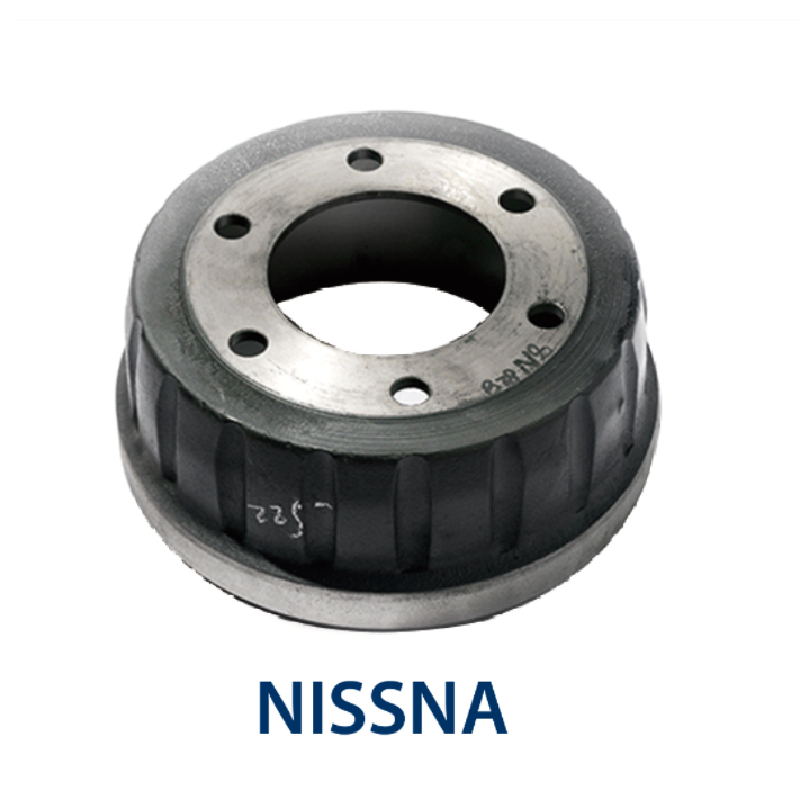Oct . 05, 2024 06:19 Back to list
brake drum adjusting
Understanding Brake Drum Adjusting Importance and Procedures
Brake systems are crucial for the safety and performance of any vehicle. Among the various components that ensure effective braking, brake drums play a significant role, particularly in older vehicles and certain designs. Proper maintenance and adjustment of brake drums are vital for optimal braking efficiency, extending the lifespan of the system, and ensuring overall vehicle safety. This article delves into the importance of brake drum adjusting and the procedures involved.
The Role of Brake Drums in the Braking System
Brake drums are part of a drum brake system, which uses friction to stop the vehicle. When the driver presses the brake pedal, hydraulic fluid is sent to the brake shoes, which push outward against the inner surface of the brake drum. This friction slows the vehicle down. As with any mechanical system, brake components undergo wear and tear, leading to the necessity for adjustments.
Over time, the brake shoes can wear unevenly or fail to engage correctly, which diminishes the performance of the braking system. If the drum is not adjusted properly, it may lead to several issues, such as increased stopping distances, uneven braking, or even complete brake failure. Thus, adjusting the brake drums is essential for maintaining a dependable braking system.
Signs that Brake Drum Adjustment is Needed
Several symptoms indicate that the brake drums may need adjustment
. Here are some common signs to watch for1. Reduced Braking Efficiency If the vehicle takes longer to stop, it may indicate that the brake shoes have not made adequate contact with the drum. 2. Uneven Wear Patterns Inspecting the brake shoes can reveal uneven wear, which suggests improper adjustment. 3. Increased Noise Grinding or squeaking noises when applying the brakes can also indicate a problem with the brake drum system. 4. Pedal Feel A spongy or soft brake pedal may suggest that the brake shoes are not positioned correctly against the drum.
If any of these signs are present, it's crucial to inspect and adjust the brake drums as part of vehicle maintenance.
Brake Drum Adjusting Procedure
brake drum adjusting

Adjusting brake drums requires careful attention to detail. While the process may vary slightly depending on the vehicle make and model, the general steps involved are as follows
1. Gather Tools and Prepare the Vehicle Before beginning, ensure you have the necessary tools, including wrenches, a jack, jack stands, and a brake adjustment tool. Safety is paramount; park the vehicle on a flat surface, engage the parking brake, and use jack stands for security.
2. Remove the Wheel Use a lug wrench to remove the wheel covering the brake drum. This step may require loosening lug nuts and using a jack to elevate the vehicle.
3. Inspect the Brake Components With the wheel removed, inspect the brake drum, shoes, and other related components for any signs of wear, damage, or fluid leaks. It’s important to address any underlying issues before adjusting the drums.
4. Adjusting the Brake Shoes Most drum brake systems have an adjustment mechanism, such as a star wheel adjuster. This component is typically located between the brake shoes. Rotate this adjuster to expand or retract the brake shoes. The goal is to position the shoes so that they slightly touch the inner surface of the drum. A common practice is to spin the drum while adjusting, ensuring that the shoes have a proper fit.
5. Recheck the Adjustment After making initial adjustments, manually spin the drum to confirm that it rotates freely without excessive friction. If the shoes are too tight, readjust accordingly. The ideal adjustment allows for a slight drag on the drum while still permitting smooth rotation.
6. Reassemble and Test Once satisfied with the adjustment, reinstall the wheel and lower the vehicle. It is good practice to pump the brake pedal a few times to seat the brake shoes against the drum properly. Finally, take the vehicle for a test drive to ensure the braking system functions effectively.
Conclusion
Regular maintenance, including brake drum adjusting, is essential for keeping your vehicle safe and operational. By understanding the importance of this procedure and recognizing the signs that adjustment is needed, vehicle owners can ensure their braking system remains in top condition. Always remember that if you are unsure about performing this maintenance yourself, consulting a professional mechanic is the best course of action. Your safety on the road depends on it.
-
ROR Web Development: Build Fast, Scalable, Secure Apps
NewsAug.17,2025
-
Scania Brake Drums: OEM Quality for Optimal Safety & Durability
NewsAug.16,2025
-
R.V.I: Advanced Remote Visual Inspection for Precision
NewsAug.15,2025
-
Discover HYUNDA: Innovative Vehicles, Equipment & Solutions
NewsAug.14,2025
-
R.V.I: Unlock Advanced Insights & Real-time Performance
NewsAug.13,2025
-
Kamaz Brake Drum: Durable & Reliable for Heavy Duty Trucks
NewsAug.12,2025
